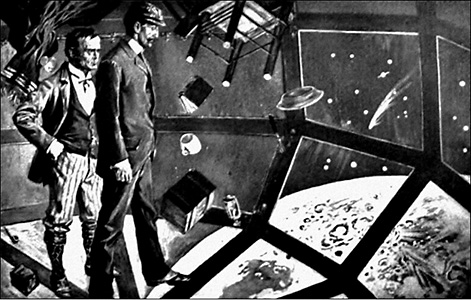
CAVORITE BLOCKING GRAVITY CODE
Bedford, meanwhile, still has in his possession the chains and the crowbar taken from the Selenites, which are of solid gold: so his fortune is made.īedford, later, discovers that a Dutch scientist received Morse code wireless signals from Cavor in the moon, where he was treated as a guest by the Selenites, who learned English, showing him their blue-lit cavern world with its ocean core, and allowing him to construct a radio-wave apparatus. A small boy enters the sphere, works the control, and is shot into space and killed. He is rescued by vacationers, but unwisely leaves the sphere open and unwatched on the shore behind him. He finds a hastily scribbled note left by Cavor, who was recaptured by Selenites.Ĭavor returns to the Earth, fortunately landing at a British seaside resort. In an agony of haste, he seeks his missing partner while the snows of sunset begin to cover the lunar world. Bedford finds the sphere but loses Cavor. The pair splits up to search for the missing sphere. The dusk is falling, which promises death, since the lunar atmosphere freezes at night.

Over Cavor’s objection, they fight their captors, killing dozens of the frail beings, and escape to the surface. While giddy, they are captured by an insectoid race dwelling beneath the lunar surface, dubbed Selenites, and wake in a dark cell chained up in fetters of gold. The pair, starving, ingests a strange moon fungus, which turns out to be hallucinogenic.

The jungle covers the sphere and they lose sight of it. The lightness of Lunar gravity allows the men go sailing on long leaps through the rapidly-growing jungle. The atmosphere thaws each dawn, and abundant fast-growing plantlife springs up with astonishing speed from seed dropped during the previous lunar day-a period of roughly two weeks.īedford opens the valve of the sphere-there is no airlock nor other precautions-and emerges into an atmosphere not only breathable, but only about as thin as on a mountaintop. The two contrive a glass sphere fitted with venetian blinds of the material, which allows them to cut off Earthly gravity while allowing Lunar gravity to attract them.Īfter an eerie passage across the abyss of space, they land on the Moon, which is imaginatively described as possessing a frozen atmosphere. He meets absentminded scientist Cavor, who is developing a metal, Cavorite, an alloy of helium, that blocks all gravity waves, nullifying the attraction of Earth. The plot consists of failed businessman Bedford, who is staying in the country, hiding from creditors, trying to write a play. The tale was not scientifically feasible even when written, nor, to be fair, was it meant to be: it was a figurative rather than literal mediation on the future. THE FIRST MEN IN THE MOON was published in 1901, six decades before the real moon landing, and I read it in 2009, four decades after the last moon landing. Reading Orwell’s NINETEEN-EIGHTY FOUR is simply a different experience for an audience circa 1948, when the Labour Party was in the ascendant in England, as opposed to 1989, when the Berlin Wall fell. The mood most likely provoked by old science fiction is one of nostalgia, melancholy facing the past, which, ironically, is the precise opposite of the mood they were meant to provoke, wonder facing the future.

These are not exactly alternate history, nor do they fit the old definition of science fiction as fiction set in a possible future.

Science Fiction of the Second Age carries with it a long history of discarded prophecies, what are called “retrofutures”, were we can look back and see what were our grandfathers’ meditations (literal or figurative) about their future. In the Second Age, the page is overwritten with real events, none of which were correctly expected. In the First Age, all science fiction was fiction, and the future was a blank page. We have entered the Second Age of Science Fiction. It is a short book and in the public domain, so it is easy to get a hold of, and easy to read. I finally got around to reading this HG Wells’ classic THE FIRST MEN IN THE MOON.


 0 kommentar(er)
0 kommentar(er)
